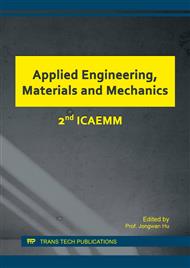p.56
p.61
p.67
p.77
p.83
p.89
p.94
p.99
p.109
Applying 2k Factorial Design to Study on Parameters Affecting Springback of Forming of Advanced High Strength Steel Sheets (AHSS)
Abstract:
Advanced high strength steels (AHSS) are widely used in the automotive industry due to their appropriate strength to weight ratio. This alloy has unique hardening behavior and variable unloading elastic modulus; however, the unavoidable obstacle of AHSS sheet metal forming is springback. The springback is a result of elastic recovery and residual stress. The aim of this study is to determine the proper process parameters enabling the reduction of the springback defects in AHSS forming process. This work was divided into two parts, regarding to the effects of numerical parameters and process parameter on forming AHSS. In this paper, a U-shape forming was used to examine the springback behaviors, such as springback angle, sidewall curl, and thickness, through an experiment. To achieve this purpose, 2k factorial statistical experimental design has been employed to investigate the parameters affecting the springback of forming in AHSS to find out the main effect in the springback reduction focusing on using as a guideline for die design. It showed that the blank holder force is the most influential parameter. The second is the punch radius. However, the blank holder force and punch radius is not simple to adjust in die design, the die radius becomes the important parameter to be used to reduce the springback angle.
Info:
Periodical:
Pages:
83-88
Citation:
Online since:
October 2017
Keywords:
Price:
Сopyright:
© 2017 Trans Tech Publications Ltd. All Rights Reserved
Share:
Citation:


